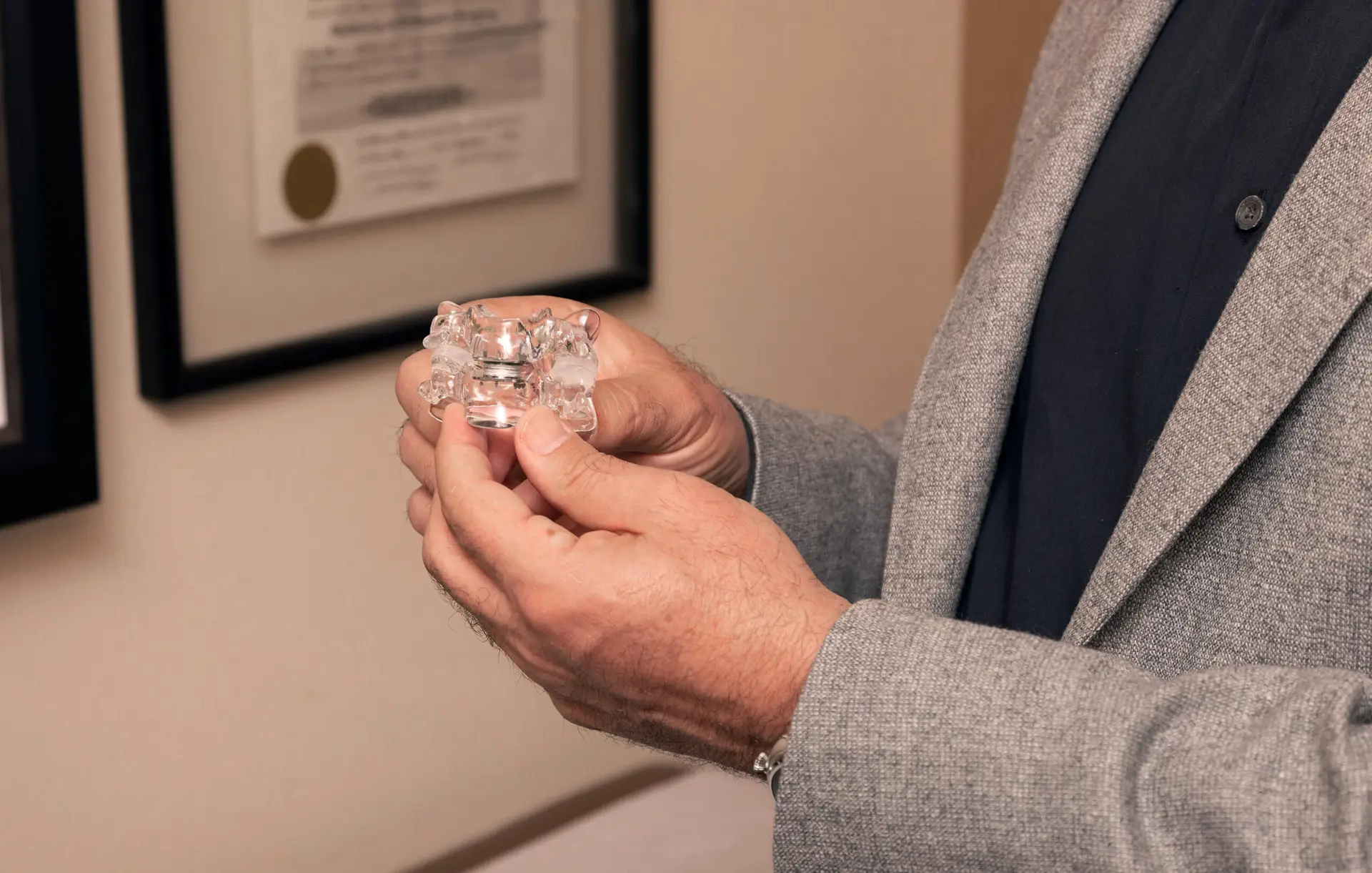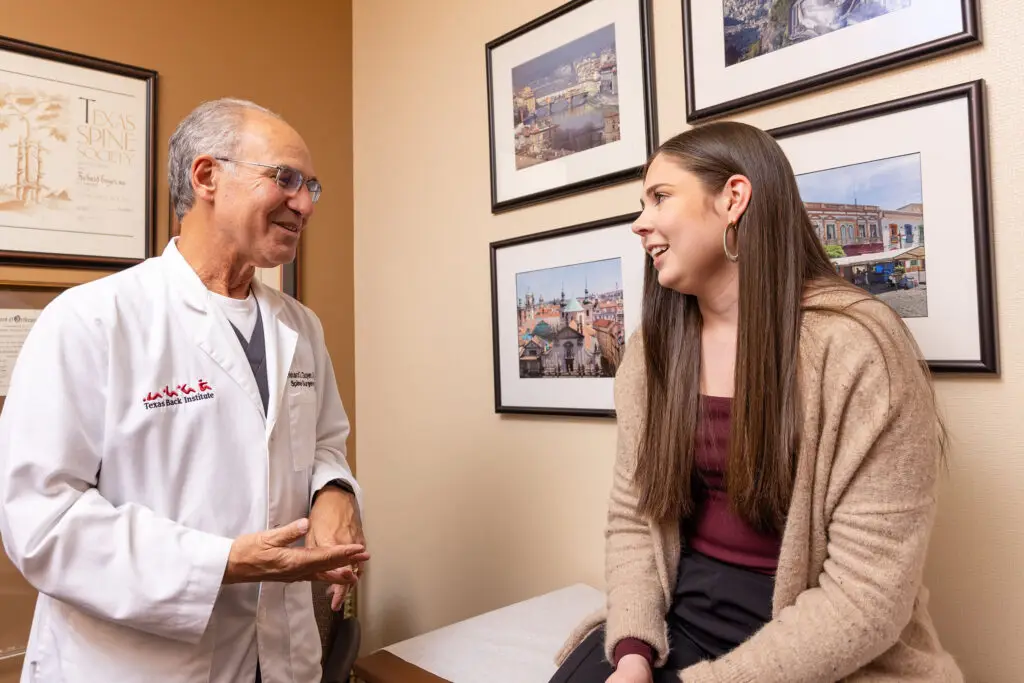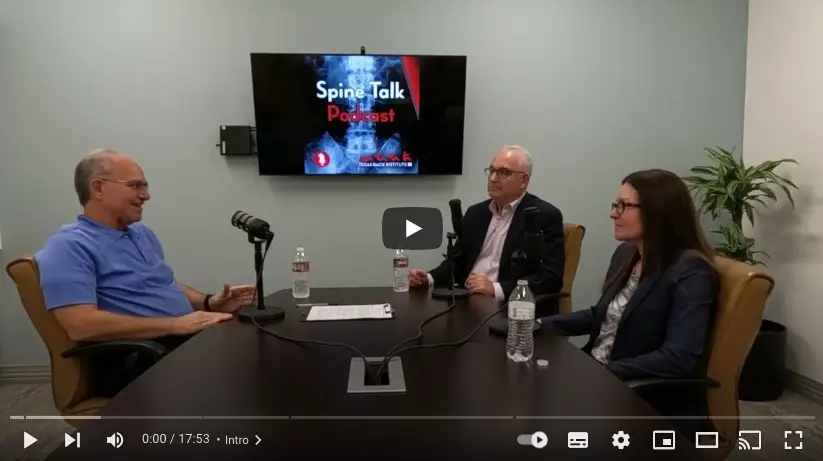Texas Back Institute was one of the pioneers in artificial disc replacement, performing the first one in March 2000 in the lumbar spine.
Helping reduce the pain caused by injured or diseased discs in more than 5,000 patients has been a life-changing experience for these patients. Plus, these procedures and patient follow-ups have provided an extensive trove of data on the efficacy of this ground-breaking treatment. After more than 20 years, Texas Back has participated in more than 14 different FDA trials of both cervical and lumbar discs.
These longer-term studies have shown that with disc replacement, spinal motion is maintained, and there is less of a chance of needing more surgery in the future.
Improved materials, technology and surgical advancements in disc replacement have revolutionized treatment for this crucial component of the spine. Since the first tests, Texas Back Institute has been one of the leaders in this procedure. If you are suffering from neck or back pain contact the experts at Texas Back.
Artificial Disc Replacement Has Helped Thousands of Patients
Recently, three Texas Back Institute colleagues—Dr. Richard Guyer, Dr. Scott Blumenthal, and Dr. Jessica Shellock—sat down to discuss the evolution of the artificial disc replacement procedure. To review the first round of these discussions, click here.
Dr. Guyer suggested, “Cervical arthroplasty, or artificial disc replacement, has really been a very successful procedure. There are now 15 approved artificial disc devices, and as we move forward, our indications have also expanded compared to the original FDA trials,” stated Dr. Guyer.
“In the original FDA trials, the indications for artificial disc replacement were very narrow,” Dr. Blumenthal noted. “Then many of us began attending international meetings and seeing what was being done outside the U.S. This was surprising.
“Slowly, we began realizing that in cases like arthritic necks, which we originally thought would not make good candidates for disc replacement were, in fact, excellent candidates. “In the past, many surgeons would say, ‘The patient had too many bone spurs or too much collapse of the disc’. With experience, we discovered that the window was wider, and we could do a lot more with disc replacement surgery than we originally thought. Of course, this benefits the patient.”
Dr. Shellock explained “For patients who are candidates for arthroplasty and also have bone spurs compressing against either the spinal cord or the spinal nerves, those can be removed, and then the procedure can be done,” she said.
Dr. Guyer agreed. “I remember when we saw a surgeon in Brussels who presented a series of these horribly degenerative cases,” he said. “We looked at each other and wondered what were they doing here?
“We’ve now expanded the basic indications from the FDA, and fortunately, the insurance companies have allowed us to still get these surgeries approved for our patients.
Dr. Shellock, what do you think is the ‘no-go’ case for the cervical spine?”
“My STOP for even considering cervical disc replacement would be in a patient where they have fused facet joints,” she said. “This would be shown by a CAT scan and reveal a bone fusion where it had grown completely across the front of that segment. In this case, to get to the disc, we would be taking down what’s almost an auto fusion. If the level is essentially auto fused, we would not undo the fusion to try and restore motion at that segment.
“I agree with Dr. Blumenthal that the indications for this procedure have really expanded for the neck. Even in cases where there is just a couple of millimeters of disc space, which used to be thought of as a contra-indication to restoring motion and doing an artificial disc. With our expanded skill set for restoring the motion of the discs intraoperatively, these patients are honestly some of the happiest patients from a post-operative standpoint. We are preserving that motion, taking away the pain, and giving them the ability to realign their neck in a more anatomic way with a device that continues to move.”
ADR Devices Have Changed
“When this procedure was first introduced, the artificial disc was typically made from metal,” Dr. Guyer said. “Now there’s a newer one that we can actually get a wonderful MRI scan of. This is amazing.”

Dr. Blumenthal agreed. “Yes. The newer one that you are alluding to is the Simplify disc. This disc has a ceramic core, and the top and bottom surfaces are composed of plastic. This means it has no imaging characteristics that prevent interpretation at that level.
“The metal implants that were the early devices made it difficult to get an accurate MRI scan. The “magnet” of this imaging tool made it harder to see what was going on at that level. With these new devices, when the radiologists examine the post-operative disc with an MRI, they don’t even know the patient had surgery.
“Material science is one of the advancements with disc replacement technology. This gives us the opportunity in cases where we might really need to image a patient later on, we won’t have any issues with imaging.”
“Absolutely,” Dr. Guyer said, “Plus, it’s the best disc out there if you happen to have a patient who has metal allergies, which we seem to be seeing more and more these days.”

Dr. Blumenthal added, “There are several FDA-approved devices. Depending on what the diagnosis is and how much bone or disc you remove, a surgeon needs to be able to fit the device appropriately in the patient. There are different circumstances under which different devices are more appropriate.”
Dr. Shellock agreed. “Some of these devices have a little more restraint on the overall motion pattern, but they all continue to maintain motion at that spinal segment. Some have a little more allowance for range of motion than others.
“In circumstances where perhaps, you need to do more resection of some of the anatomy to do the surgery and also take the pressure off the nerves of the spinal cord, you may choose a device that gives you a little more stability while still preserving motion. Because we have learned much about these devices from the experience of completing this procedure over thousands of cases, we have many, many things to choose from in our toolbox,” she concluded.
Insurance Challenges Remain
Insurance coverage is an important “driver” of medical innovations. Dr. Guyer asked his colleagues, “What about insurance coverage? We have several disc models that are approved for two levels. Will insurance pay for two levels of any disc, or do we have to just use those two-level discs that have approval?”
“Honestly, I think it depends on how closely the insurance company examines what we’re submitting to them,” Dr. Shellock said. “However, there are a few that are FDA approved specifically for one and two levels, and these are two continuous levels. They must be next to each other. So, the patient can’t have a level, skip a level, and do the next level below that and get that covered under the FDA criteria.
However, there are other discs out there that have not yet received approval to be used in multi-level or two-level settings. I think that as surgeons, we know what discs are better in certain circumstances, and we can decide which ones we want to use. But having said that, there are many times where the insurance company will ‘flag’ it, and those might not be able to be used in that setting. When this occurs, we go with those that are FDA-approved.”
Dr. Guyer asked, “What about the patient who comes in with their previous fusion and now has changes in a degenerative disc at the level above, causing neck and arm pain? The obvious medical course is to consider doing a disc replacement. How do you deal with that with the insurance company?
“It’s variable,” Dr. Blumenthal said. “There are cases when the claim flies right on through and we never get asked a question. And then other times we must argue with the insurance medical contact, who might have never even seen a disc replacement, and says no. Every patient is different, and we treat every patient individually. Unfortunately, that doesn’t work in the corporate insurance world. This is a battle that we fight every day.”
Dr. Shellock added, “Just for the sake of understanding the terminology in the situation you described what you’re referring to is something we call a ‘hybrid.’ So, you can have a fusion at one level and then do a disc replacement at the next level adjacent to or next to that. This is something that has yet to really see its day with insurance coverage.
“Recently, the Aetna policy indicated that this hybrid would be approved. That’s a big step, but it’s still not widespread coverage. Many times, patients who have had a previous fusion from years ago and have suffered the wear and tear and breakdown of the level above (because of the fusion) may not be able to get coverage for the better technology now.”
Dr. Guyer asked,” What about the post-op routine? That’s changed a lot since we started doing it.
“We have learned so much about how much more quickly we can get patients back to their normal function. For example, we used to put patients in those hard collars for six to eight weeks before starting physical therapy. Now we rarely use a collar at all. A patient starts physical therapy within days to weeks after the surgery, and by six to eight weeks, the patient is back riding roller coasters, playing golf and tennis, and able to enjoy their kids and grandkids.”
Surgery is always the last option for the specialists at Texas Back Institute. However, if damaged or diseased discs are impossible to correct without surgery, artificial disc replacement could be a life-changing decision. Click here to set up an appointment with any of these three experts.



